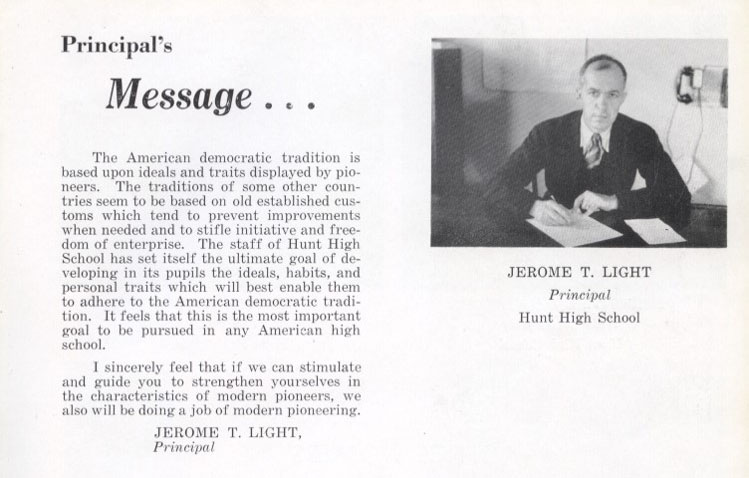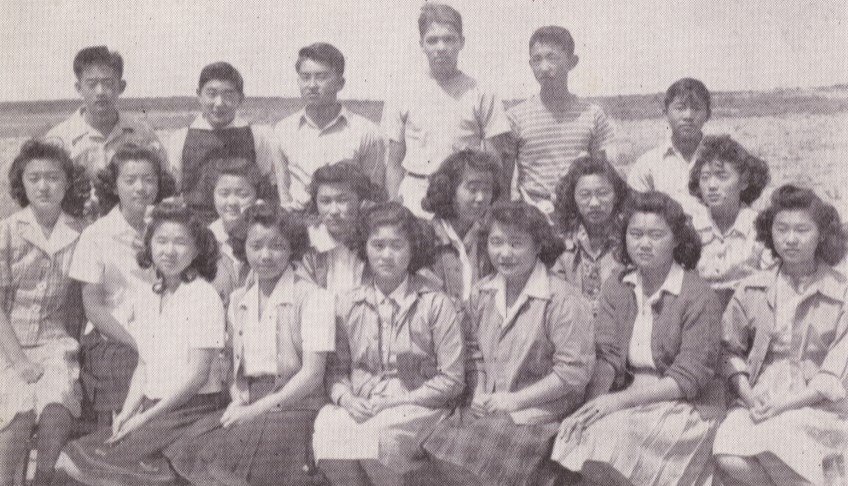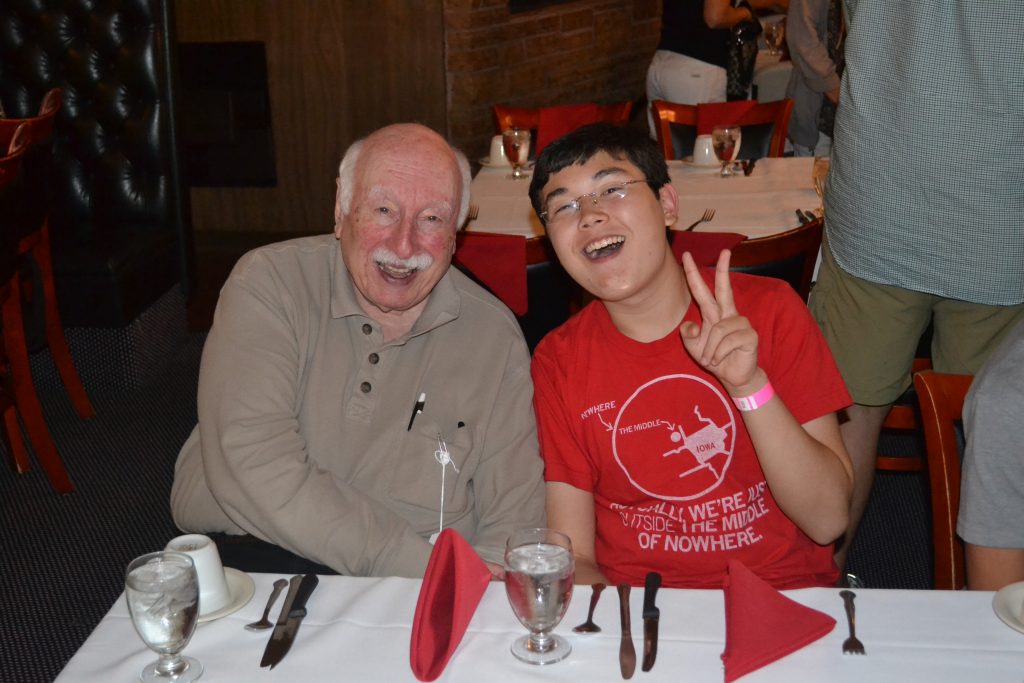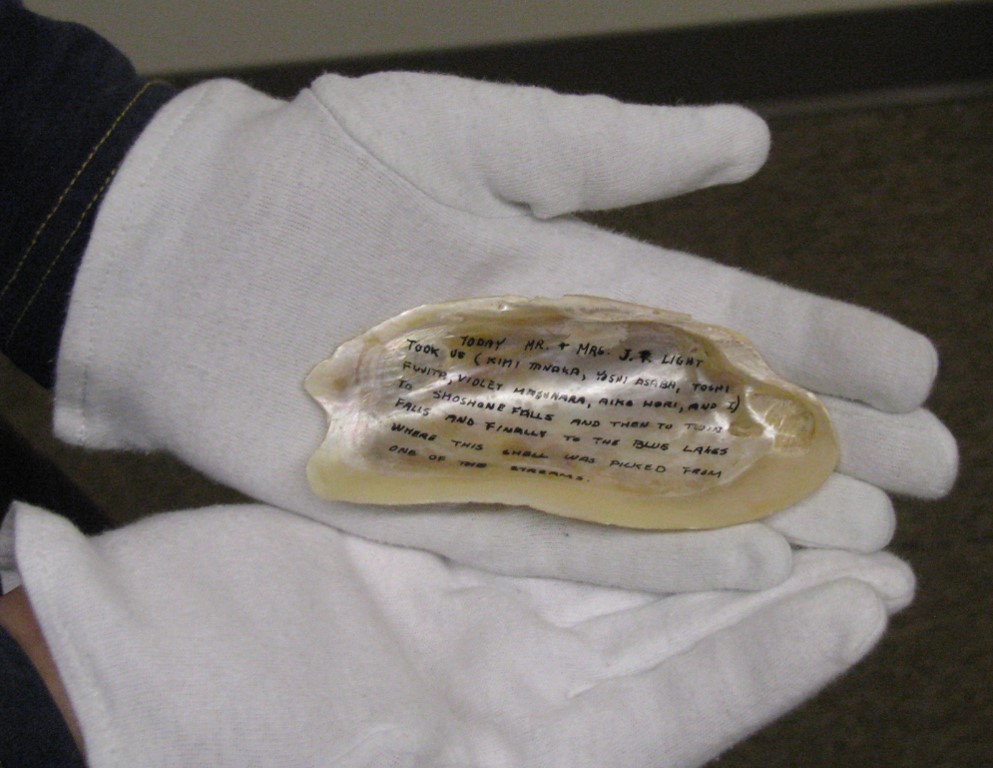July 21, 2016
During World War II, American citizens were imprisoned without due process because they looked like the enemy. The Minidoka Pilgrimage is a testament to the resolve that this never happen again. This was also the belief of Jerome T. Light, the extraordinary principal of Hunt High School who established an accredited, progressive, community-based secondary education program within the barbed wire perimeter of a prison camp. Those who knew Jerry Light and his family have never forgotten them and this memory was at the heart of our presentation.

The session began with the story behind a simple sea shell shared by Todd Mayberry, Director of Collections and Exhibits at the Oregon Nikkei Legacy Center. This fragile artifact is part of the permanent collection of this Japanese American history museum located in Portland, OR. It was found in a river bed by Shiuko Sakai, a school secretary, and inscribed by her seventy-five years ago. The inscription states that the Lights had taken her and other school staff on an outing beyond the fence of the concentration camp. In carefully applied ink, Shiuko documented her pleasure at being in their company.

The presentation of this artifact was followed by a screening of an interview from the Densho Digital Archive with Robert Coombs who served as a core teacher at Hunt High School. His recollections of Jerry and Dorothy Light and their four boys gave our presentation a vivid description of the leadership and creativity of this unique individual. In the interview, Coombs stated that Jerome T. Light’s support of the students and parents of Hunt High resulted in sanctions from the administration and eventually led to his unfair dismissal from Minidoka.
One of the highlights of the presentation was a live Skype interview with 87-year-old Thomas Light of Portsmouth New Hampshire. Tom, the oldest son of the principal, was a student at Hunt High and, like the rest of the family, lived within the barbed wire enclosure. He shared his memories of his father with the audience. Tom also recalled his experience as a member of the Boy Scouts at Minidoka. Technical problems shortened the interview, but his participation was greatly appreciated.
Finally, using a variety of sources – ranging from unpublished biographies to the family copy of Jerome T. Light’s 1947 doctoral dissertation from Stanford – we were able to understand how important Light was to the creation of the best high school in the state of Idaho. By accessing the Densho Digital Archive and sharing letters written by Helen Amerman, a Hunt High teacher and student counselor, we gave voice to the lasting legacy of this exceptional educator. Through his determination and belief in his students, Light was able to establish a high school for democracy in twelve tar paper clad barracks, in a prison setting on the remote high desert of the Snake River basin.

Despite sources to the contrary, such as the oft-quoted Arthur Kleinkopf diary, our presentation brought new historical materials and insight about Jerome T. Light and the pivotal role he played in creating Hunt High School.
There were two capstones to our presentation. Firstly, New Hampshire Public Television is planning to interview Tom Light. When they do, they have agreed to make the footage available to both Densho and the Oregon Nikkei Legacy Center. Secondly, at the end of this fourteenth annual pilgrimage to Minidoka, my grandson Coby – who is also fourteen, hapa, and entering his freshman year of high school – told me, “Grandpa I am so proud to be one half Nisei!” I am sure he will retell the story to his children and they in turn to the next generation.
—
By Eugene H. Freund, Emeritus Professor at the University of Nebraska Omaha
[Blog header: A seashell inscribed by Shiuko Sakai, a Hunt High School secretary, 75 years ago notes her appreciation for an outing Light organized.]
